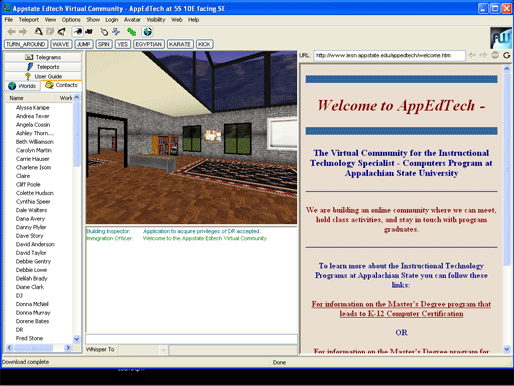
|
This is the AET client. It works on Windows (only), is < 2 Mb, and can be
downloaded as often
as you'd like, wherever you'd like. Click on the Advanced Mode button in the top-left
to gain access to the tabs, where you'll find help, your teleports (sort of like bookmarks),
your contacts (who's online now?), and other useful tools. On the right, interact with the
web-based content that appears when you move through doors and/or click on signs and other
objects. Finally, use the chat space in the middle of the screen to communicate with others
in real-time.
|
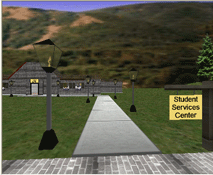
|
Walk down the path to the Student Services Building. It is one of several student
support structures already in place, including: The
library, the alumni center, and faculty
offices. Enter the student services building and find the departmental office to the left --
with contact information for our departmental assistants and department chair. Move straight
ahead and enter the Extension and Distance Education
office to download programs of study and
other administrative forms. |
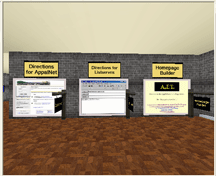
|
Enter the Student Services Building, turn right, and find resources for logging onto the
program's lists, configuring your personal homepage in AET, and using the university's
web-based course- and student-management system--AppalNet.
|

|
The AET Library is where students and faculty go to utilize the distance learning services of
ASU's Belk Library. Visit
the library for access to journals, searchable databases with full-text, online
articles, curriculum guides, the library catalog, encyclopedias, and links to university resources such as the
Instructional Materials Center and the University Writing Center.
Librarians hold "office hours" six days per week at specified times, helping
students and faculty utilize the library's online resources. |
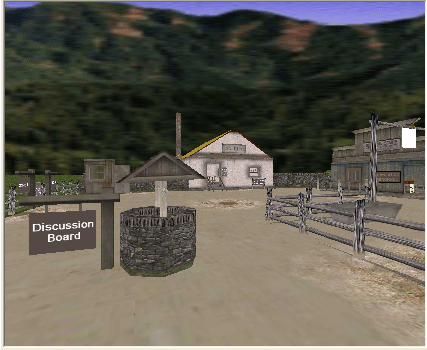
|
Let's visit FDN 5220: Computers in Ed Settings. The Old West metaphor signifies the 'rough edges'
of teaching and learning in cyberspace. Mosey on over to the well and have a conversation on
the course discussion board. Turn right and enter the "Seekers Corral", where you will find
resources and tutorials for searching the Web and finding information.
|
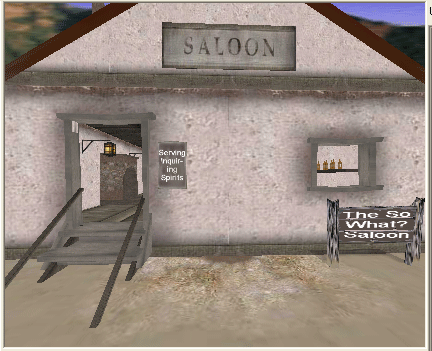
|
Come to the "So What? Saloon" and ponder the important questions. "So What?" is our focusing
question in the ASU IT program. It is our mantra, and it helps us keep in mind that our
technological endeavors are guided by our vision for making learning a more effective process
for all students.
|
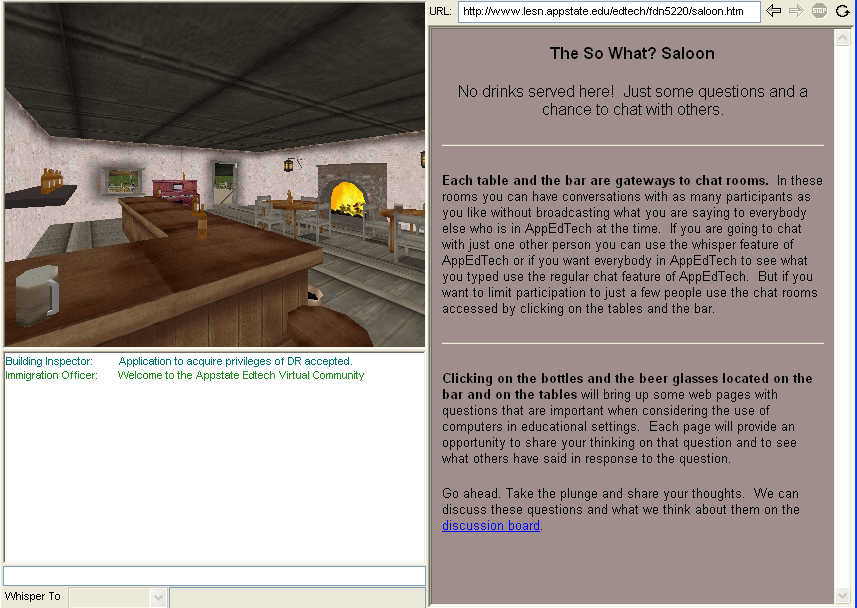
|
When you enter the Saloon, click on a table, and enter the chat room that appears. Share your
perspective with peers and colleagues about questions that guide our field. |
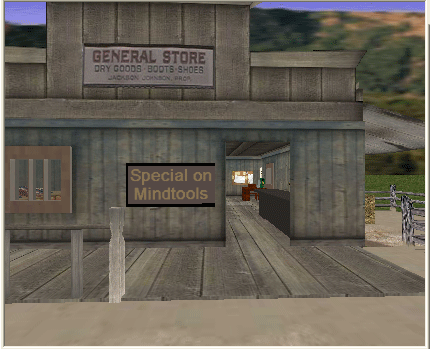
|
Feeling refreshed? :) Good. Hang a left and move on to the General Store. There's a
special on Mindtools this semester. Be sure to share your ideas of how we might use
computers in educational settings to support conversation, dynamic modeling, semantic
organization, interpretation and knowledge construction. |
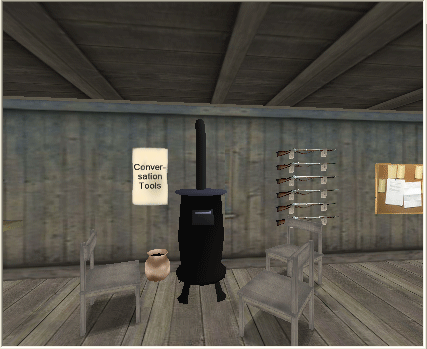
|
Pull up a chair next to the stove and let's talk. Here, we'll ask you to explore conversation
tools such as email, discussion forums, chats, and Instant messaging.
|
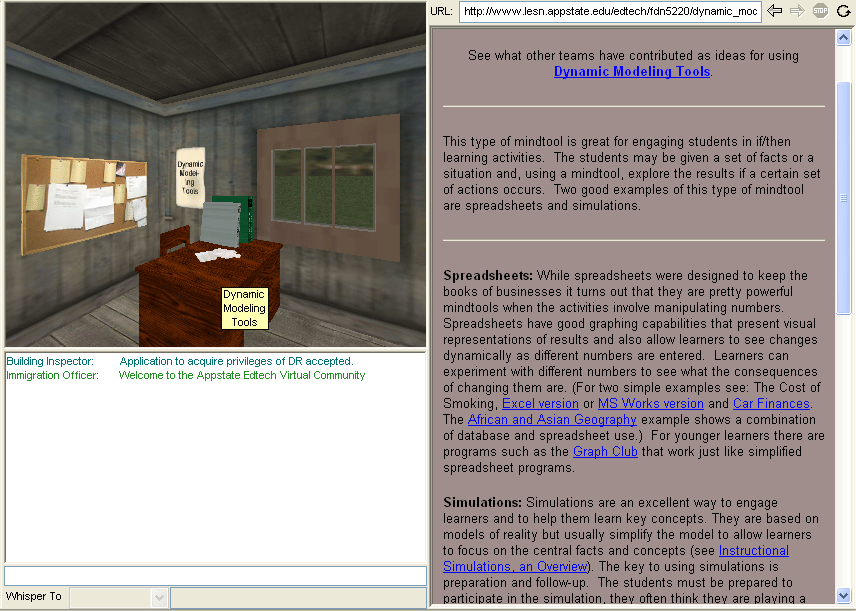
|
Dynamic modeling tools -- such as spreadsheets and databases -- help learners view information
in different ways. Use the datasets and prompts provided to engage in dynamic modeling--how
do these tools help you see what you might otherwise miss? |
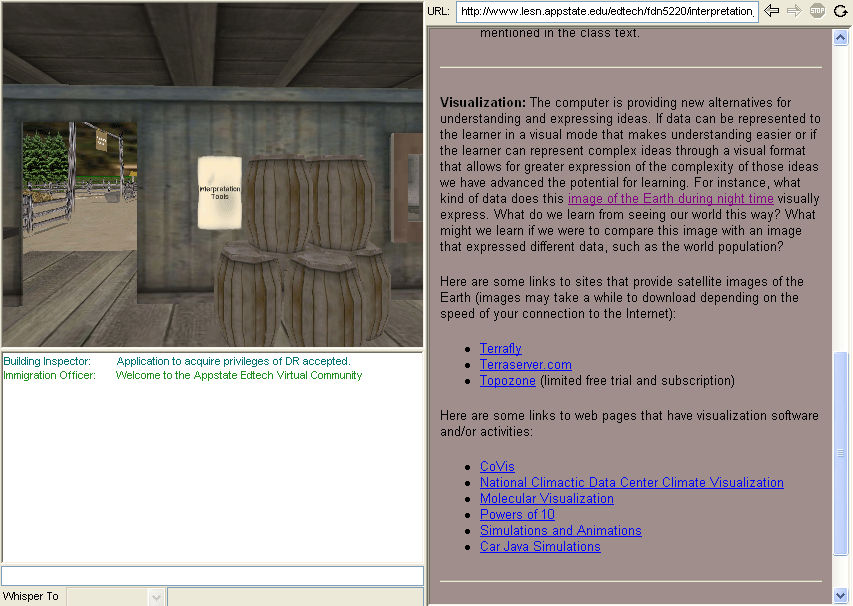
|
The computer is providing new alternatives for understanding and expressing ideas. Interpretation
tools help learners make sense of the sea of data through which we all tread as we
learn online. Using search techniques, visualization, and other interpretation strategies,
learners may take advantage of interpretation tools online. |
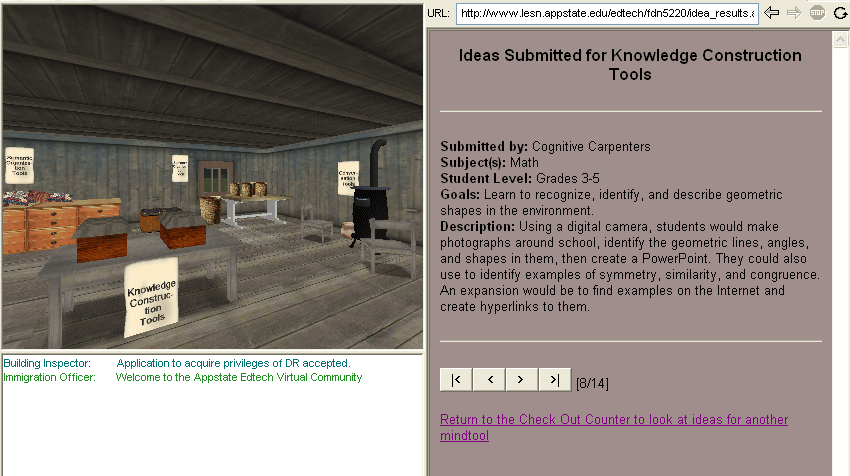
|
Knowledge construction tools provide learners the opportunity to produce
something sharable and, in the process, to develop understanding and mastery of
the concepts being learned. Hypermedia is an excellent example of a knowledge construction tool
|
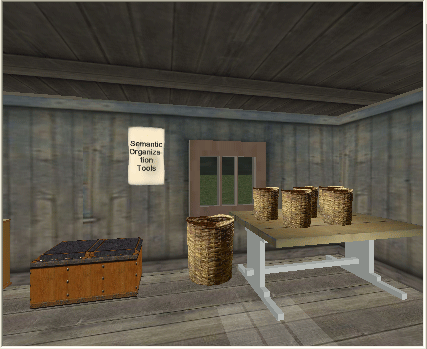
|
Semantic Organizers help learners organize, compare, and contrast information and ideas in
ways that develop new understandings and/or support knowledge construction in ways that
are more readily understood.� Two common types of semantic organization tools
are: databases and concept mapping software.
|
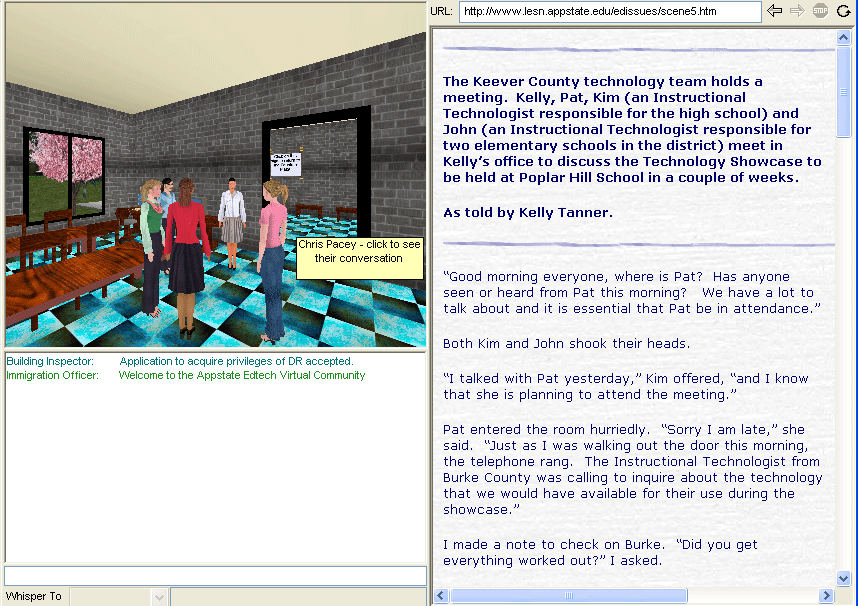
|
AET is more than a graphical environment for links and webpages. For example, in FDN 5320:
Issues in Learning with Computers, you will meet some faculty, administrators, and parents
associated with Keever Middle School--a fictitious school, with real problems. "Join" the
cast of characters by visiting each scene. Click on a character to read his or her
perspective on the issues at-hand.
|













